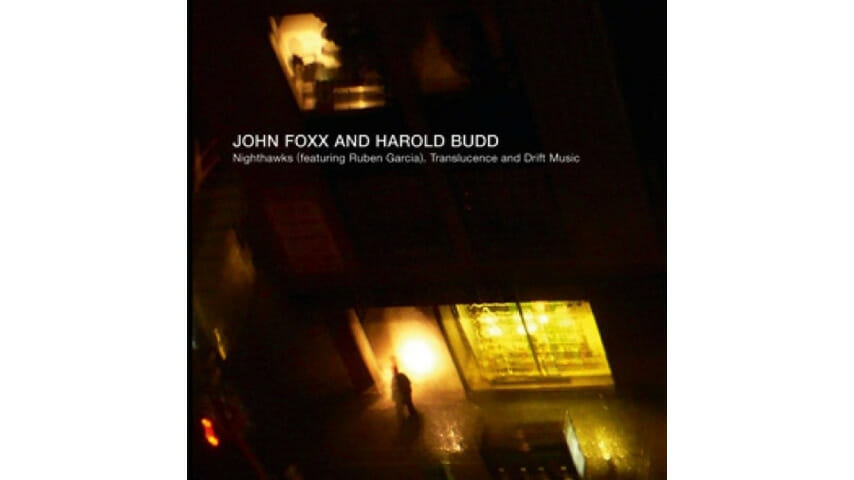
These ambient albums have not been unavailable for long. Both Translucence and Drift Music were released in 2003, and Nighthawks came out only four years ago. Yet their return to the world is a welcome one, after a few years of falling out of print. All three discs, released once more by John Foxx’s Metamatic Records, are almost unbearably beautiful, taking their titles very seriously as the placid and delicate tunes on each evoke images of silhouettes of birds cutting across an early evening sky or slowly floating on a quiet, still body of water.
Translucence and Nighthawks are very much of a piece, concentrating as they do on adding reverb and echo to some simple yet effective piano playing, or augmenting it with ghostly synthesizer work. The latter is perhaps even more melancholic and wistful as it draws out the players’ romantic and nostalgic moods, if we are to take these track titles at their words. But how else would you describe a heartbreaking wash of chords and gentle booms than through a heading like “Now That I’ve Forgotten You”? It’s like that small ache that arrives when you realize how long it has been since you’ve thought about a dead relative or former lover of your life. And, yes, the studio-created wind sounds are a little on-the-nose to go along with the glassy chords of “When The City Stops For Snow,” but the thought of listening to this while tramping through a blanket of white on a quiet boulevard is what makes the winter months bearable.
The synthesizer takes precedence on Drift Music, which should come as no surprise if you’ve followed the work of Foxx and Harold Budd for these past few decades (Foxx got his start as frontman for early synthpop group Ultravox! and Budd has added his keyboard mastery to solo albums and collaborations with Cocteau Twins and Brian Eno). The piano does arrive throughout, as on the cresting and receding “After All This Time” and the wistful “Avenues of Trees,” but more often than not, it gets hidden among a thicket of aftereffects and a stream of electronic color. The mix of shorter and longer songs on here offers some needed variation but it’s the more drawn-out numbers that have the most lingering effect. The trills and fades of “Underwater Flowers” and the gorgeous blooms of “Coming Into Focus” need time to expand. All the better to sink deeply into the system and leave a lasting mark.